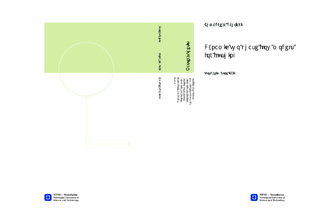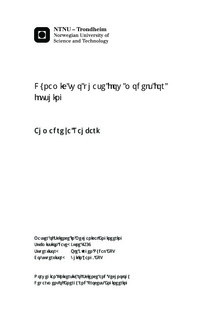| dc.description.abstract | This thesis aims at modeling the separated liquid-liquid flows with application for flushing. In the beginning, there will be a short review of the governing equations and the fundamental concepts used in this thesis. Two models are introduced and developed based on two previous PhD dissertations from NTNU(Trygve Wangensteen and Tor Kindsbekken Kjeldby). The properties of the fluids in these models are based on Oil, Exxsol D80, mu_o=1.79 [cP] and tapped water, mu_w=1.11 [cP]. These models will be numerically developed for both dynamic and stationary flows. The numerical scheme used for these models is explicit. A complete explanation about discretization is given in chapter 4.After developing the dynamic and stationary solutions for both models, there will be two major case studies. The first one is to understand when the dynamic and stationary solutions depart from one another as the mixture velocity varies between low velocities to high velocities. It turns out that The solutions look quite similar until the mixture velocity reaches the value of around U_M=1 [m/s]. Then the solutions become more and more different especially at the oil front. The second case study is about keeping the mixture velocity constant and varying the pipe angle. The pipe angle variation range lies between -2.5 and +5 degrees. For negative inclinations, the dynamic and stationary solutions agree quite well. However when the positive slope is put to the test and gravity is acting against the flow, the dynamic and stationary solutions differ more.\\Finally there will be a discussion on where this different behavior stems from. The two fluid model introduced at the beginning of this report is studied closely, term by term. These terms represent the frictional forces that balance the pressure gradient in the pipe. These forces are plotted for four different cases with mixture velocities varying from U_M=0.25 [m/s] to U_M=5 [m/s]. These figures reveal which forces dominate the solution for relatively low and high mixture velocities. The dominating forces are the ones that balance the pressure gradient. It turns out that the level gradient is quite significant and a dominant term in almost all cases. However as the mixture velocity increases, the acceleration terms grow to the same order of magnitude as the level gradient. But for the most part, the spatial and the temporal acceleration act symmetrically, and in effect cancel each other out. There will be a thorough discussion about this in the final chapter. | nb_NO |

